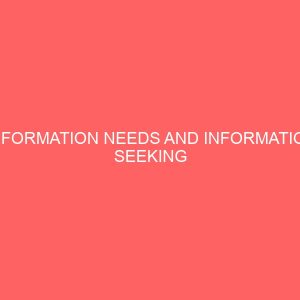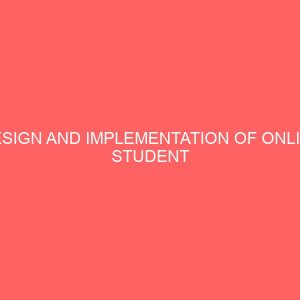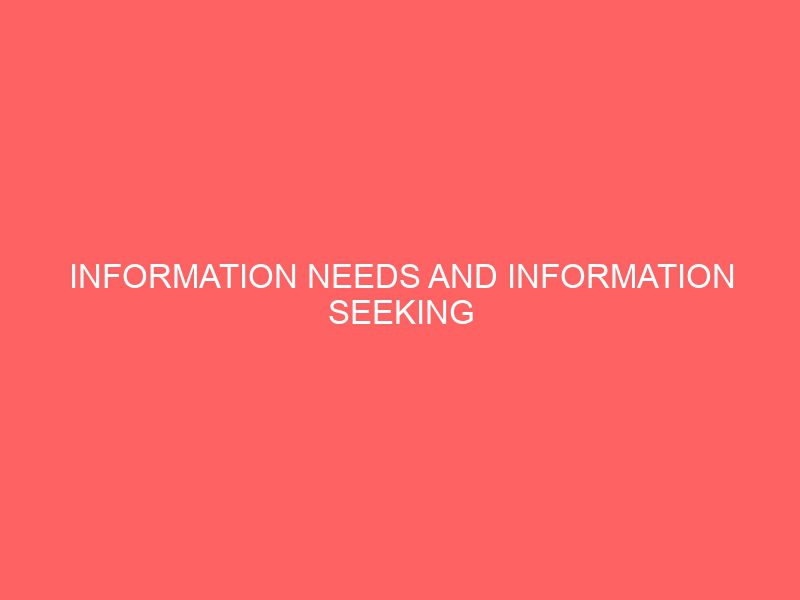Description
ABSTRACT
According to Davidson and Lingam 1997, the understanding of information needs and informationseeking behavior of various professional groups is essential as it helps in the planning, implementation and operation of information system and services in the given work settings. With this broad theme in mind, this study was conducted with a sampling population of 50 post graduate students of School of Economics, Madurai Kamaraj University with a specific purpose to trace out their information needs and information seeking behavior. A structured questionnaire was used as a data gathering tool. The findings of the study revealed that: 26 of the respondents use the internet of web pages and 24 of the respondents use the on line eresources to get information; 22 of the respondents are using the internet daily in the library; 40 of the respondents use Google, 22 of the respondents use Yahoo and Alta vista and 16 of the respondents use other search engines; 24 of the respondents use OPAC library catalogue and 38 of the respondents use the book reviews to trace the relevant documents available; 40 of the respondents make use of keyword search, 22 of the respondents use Title search, 28 of the respondents use author search and 10 of the respondents make use of subject search as their mechanisms; 30 of the respondents each feel lack of time due to abundant literature and Inadequate resources /library online resources are the main reasons for getting the required information belated; 48 of the respondents make use of the internet facility at University library; 8 students are very fluent in using the resources available in the library and 21 of them 42 are good in using such resources.
CHAPTER ONE
1.0 INTRODUCTION
A. INFORMATION NEED
Information need is often understood in information science as evolving from a vague awareness of something missing and as culminating in locating information that contributes to understanding and meaning Kuhlthau, 1993. Information need is described as an anomalous state of knowledge Belkin et al, 1982 or a gap in individuals knowledge in sensemaking situations Drevin amp; Nilan 1986. Wilson points out that there must be an attendant motive when a person experiences an information need Wilson 1997. Line 1974 defined that information need is what an individual ought to have for his work, his edification, his creation etc.
B. INFORMATION BEHAVIOR
Information behavior can be defined by the general model of information behavior developed by Wilson Wilson 1997. According to Wilson, a general model of information behavior needs to include at least the following three elements:
An information need and its drivers, i.e., the factors that give rise to an individuals perception of need;
The factors that affect the individuals response to the perception of need; and
The processes or actions involved in that response.
Taylor 1991 defines information behavior as the product of certain elements of the information use environment The elements are:
The assumptions formally learned or not, made by a defined set of people concerning the nature of their work.
The kinds and structure of the problems deemed important and typical by this set of people.
The constraints and opportunities of typical environments within which any group or subgroup of this set of people operates and works.
The conscious, and perhaps unconscious, assumptions made as to what constitutes a solution, or better said, a resolution of problems, and what makes information useful and valuable in their contexts.
Based on the definition he believes that the information behavior of different groups of people also is different.
C. INFORMATION SEEKING BEHAVIOUR
Information seeking is a basic activity indulged in by all people and manifested through a particular way of behavior. It is also an aspect of scholarly work most interesting to academic librarians who strive to develop collections, services, and organizational structures that facilitate seeking of information Wiberley, 1989.
Information seeking behavior is a broad term which involves a set of actions that an individual takes to express information needs, seek information, evaluate and select information, and finally uses this information to satisfy his/her information needs. Varies factors may determine the information seeking behavior of an individual or a group of Individuals. It is, therefore, desirable to understand the purpose for which information is required, the environment in which the user operates users skills in identifying the needed information, channels and sources preferred for acquiring information, and barriers to information.
1.1PREAMBLE
One of the most important areas of research in the library and information science field is user studies which first emerged in the late 1940s Siatri 1999. A range of associated concepts has developed from user studies such as those focusing on information needs, informationseeking and informationseeking behaviours. These studies have attracted many researchers and a large body of literature has developed, particularly following the rapid development in information and communication technology. The medical field is one discipline which has attracted attention in user studies over the years.
Over the past decades, studies of pharmacists information needs and informationseeking behaviours have become an important focus of medical field and have been investigated in a variety of contexts, particularly pharmacists working in primary healthcare services. Few studies have been conducted to investigate the information needs and informationseeking of pharmacists working in hospitals. Both primary care pharmacists and hospital pharmacists practice medicine and contribute to improving the health of society by providing necessary healthcare services. However, the nature of their duties is quite different. For example, primary care pharmacists are responsible for defining the diagnosis of the patient and then referring them to secondary care for the appropriate treatment when appropriate. It is then the hospital pharmacists who continue the journey of the primary care pharmacists by referring those patients requiring further medical expertise or procedures for either medical care or a secondary diagnosis Simpson et al. 2009a. Besides that, hospital pharmacists have other duties involving many clinical scenarios. For instance, when they work in the outpatients department they usually see patients who have been referred from primary care or the emergency department and need further diagnosis and treatment. They see inpatients that come to hospital for treatment and diagnosis and who have to stay overnight. In addition, they see emergency patients who need immediate attention for diagnosis and treatment of injuries or illness. Moreover, they may choose to treat patients or refer them to another specialist, consultant or healthcare professional. They work collaboratively with a wide range of other professionals across the healthcare sector. Thus, it seems that pharmacists are working in a full, rich, contextual environment and, as in any other profession, they need information in their daily practice.
Thus, Hersch and Lunin 1995 mentioned that about a third of pharmacists time is spent recording and synthesising information and a hospital spends a third of its costs on personal and professional communication. pharmacists information needs will be expressed by seeking different types of information sources to fulfil them. Normally, pharmacists rely on their personal medical knowledge. Thompson 1997 stated that pharmacists normally rely on their personal knowledge that builds up over years of clinical practice. Also, they rely on information that is available in patient medical files or via communication with the patients such as explanation of symptoms and requests for further investigations such as laboratory tests and Xrays. All these sources of information exist to help the doctor/pharmacists reach his/her conclusion. The doctor may ask questions in order to enable his/her medical decisionmaking to provide better services to patients and eventually improve healthcare.
Despite the pharmacists medical knowledge and patient data resources being the primary information resources that assist pharmacists in their clinical judgment, they may not be able to satisfy pharmacists information needs if they are not updated or use other information sources to add to their medical knowledge GonzalezGonzamp;lez et al. 2007. The introduction of information and communication technology, such as the Internet, under the term Health Hill and Powell 2009, has the potential to improve health information provision by providing access to a large body of online clinical information and knowledge. In addition, the computerbased patient record is another feature of the advance of eHealth technology. It is designed to support healthcare providers through the availability of complete and accurate patient and medical data and a clinical decisionsupport system. In spite of the several advantages of using these technologies, they increase the amount of clinical information, which may create other problems, as pharmacists have to access and manage the information they need. Another issue is that new technology may fail to live up to expectations. One of the reasons for the unsuccessful implementation of health information systems as indicated in the literature is the lack of knowledge about the end users information needs Ely et al. 2005. Certainly, pharmacists information needs and informationseeking is different from one scenario to another. Their information needs occur in different clinical scenarios and the most common scenario indicated in the literature was communication with patients in outpatient departments, wards and emergency rooms. Thus, the degree of using the above mentioned clinical information sources will be crucial in pharmacists clinical decisionmaking in these three scenarios. This study explores these issues within the Makurdi context.
1.2 STATEMENT OF THE PROBLEM
Healthcare services occupy an important and significant position amongst the decisions made by the government. Health authorities are seeking for an optimal way to utilize and manage the patient medical data to enable healthcare providers to improve the quality of healthcare in Makurdi. One of the major developments in recent years has been the implementation of a healthcare database, the Primary Healthcare System, in all primary healthcare centres in Makurdi. Also, a Secondary Healthcare System for regional hospitals, which is undergoing development, involves the creation of a Hospital Management Information System United Nations 2007.
Because pharmacists working in public hospitals are a fundamental part of the Makurdi healthcare delivery system, their information needs and seeking is crucial in improving the current healthcare information provision. Consequently, this study aims to play a part in these government attempts to improve the situation.








Reviews
There are no reviews yet.